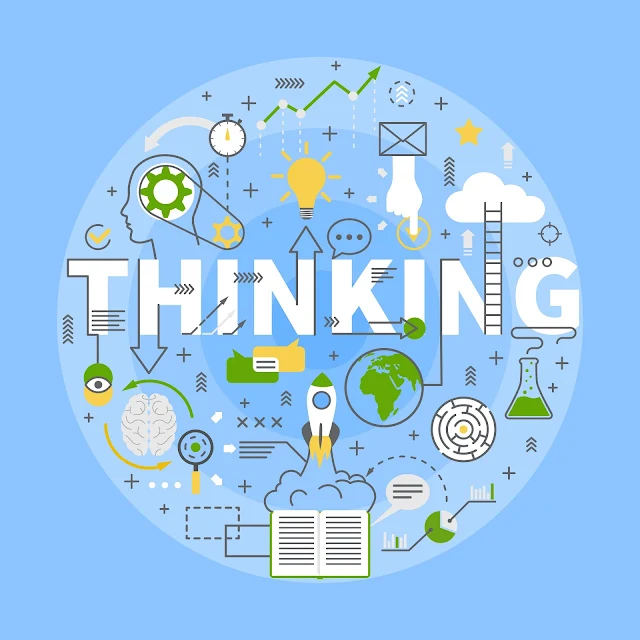Context Collapse: When Social Contexts Converge Online


 |
| Educators can empower students by blending the analytical rigour of STEM with the critical awareness promoted by media literacy. (📷:millenniumpoint) |
As our society becomes increasingly digitised, the flood of information available to students is both a blessing and a curse. On one hand, technological advancements grant access to unprecedented knowledge; on the other, they expose learners to a barrage of misinformation and biased narratives. In the STEM fields, where data and empirical research are paramount, the capacity to evaluate information critically can bridge the gap between technical knowledge and its real-world application. Integrating media literacy in STEM education is not just an added skill — it is essential for nurturing graduates who are not only experts in their fields but also informed citizens capable of engaging in public discourse. Recent data underscores the rising prevalence of misinformation in digital spaces, which can undermine scientific literacy if not countered effectively.
Traditionally, STEM education has focused intensively on technical proficiency, problem-solving, and analytical reasoning. However, the rapid evolution of digital media necessitates that students also learn to question the origins, reliability, and purpose of the information they consume. Media literacy teaches skills such as critical thinking, evaluation of sources, and understanding context — tools that are equally beneficial in the scientific realm. By integrating media literacy into STEM curricula, educators can foster a dual competence that enriches students’ capacity for rigorous analysis and ethical judgement. Research indicates that students exposed to interdisciplinary approaches exhibit stronger critical thinking skills and exhibit better academic performance in both STEM and humanities subjects.
 |
| (📷:empowervmedia) |
Incorporating media literacy into STEM education goes far beyond traditional technical training; it enhances critical thinking and inquiry. When students learn to question the validity of digital information — whether it comes from academic journals, news outlets, or social media — they begin to develop a healthy scepticism. This scepticism is not about distrusting all sources but about nurturing an active engagement with the material. For example, a student analysing climate data can benefit immensely from media literacy by cross-verifying information and identifying biases in reporting. Such a skill set is crucial in an era where studies, data visualisations, and scientific claims are often presented in varied and sometimes misleading formats. The positive impact of critical analysis in academic settings has been documented extensively in recent educational research.
Beyond academic achievement, integrating media literacy into STEM curricula prepares students for citizenship in a digital age. When learners are equipped to assess the credibility of sources and recognise persuasive techniques, they are better positioned to participate in informed public debates. This is particularly important in democratic societies, where public decisions increasingly depend on accurate, well-contextualised information. Students who master media literacy can help to counteract the spread of disinformation by sharing verified content and engaging in constructive dialogue. In this way, education becomes a tool for societal transformation, ensuring that tomorrow’s leaders are not only scientifically proficient but also socially and politically aware. Studies have demonstrated that enhancing media literacy skills correlates with increased civic engagement and resilience against misinformation.
Successfully merging media literacy with STEM education requires innovative teaching strategies and curriculum design. One promising approach is project-based learning, where students work on interdisciplinary projects that involve data analysis alongside media criticism. For instance, a project could challenge students to evaluate the media coverage of a groundbreaking scientific discovery, using their analytical skills to compare sources and assess narrative framing. This hands-on learning not only reinforces technical concepts but also instils a habit of questioning and verifying information. Moreover, collaborative assignments encourage students to learn from each other and foster an academic environment where diverse perspectives are valued. Teachers, therefore, have a pivotal role in designing coursework that bridges the gap between factual rigour and critical inquiry. Pilot programs that integrate these methods have shown promising results in enhancing both STEM competence and media literacy.
Despite the clear benefits, challenges remain in integrating media literacy into established STEM curricula. Institutional inertia, teacher preparedness, and limited curricular space are common obstacles. Educators must be provided with proper training and resources to effectively incorporate media literacy practices into their classrooms. Furthermore, interdisciplinary collaboration between STEM professionals and communication experts can help to develop robust, scalable programs that meet modern educational demands. While reform may be gradual, the potential benefits — in terms of nurturing adaptable, knowledgeable, and critically engaged graduates — are immense. Early adopters of interdisciplinary curricula report positive shifts in student engagement and academic performance, signalling a growing trend in educational innovation.
Looking ahead, the integration of media literacy into STEM curricula represents a transformative step towards cultivating a generation of informed, critical, and empowered citizens. In the 21st century, where the boundaries between disciplines blur, the synthesis of scientific rigour and critical media literacy is not only desirable but necessary. This approach will enable students to navigate an increasingly complex digital world, challenge misinformation, and contribute meaningfully to public discourse. As educators embrace this paradigm, they pave the way for a future where academic excellence is matched by a commitment to truth and social responsibility. This vision is supported by cross-disciplinary studies emphasising the benefits of integrative learning models in fostering both technical expertise and critical consciousness.
 |
| Incorporating media literacy into STEM education enhances critical thinking and inquiry. (📷:mns.edu.eg) |
⭐⭐⭐
*During the preparation of this work the author used Large Language Models (LLM) in order to brainstorm on arguments that could be used in the article. After using these tools, the author reviewed and edited the content as needed and takes full responsibility for the content of the publication.
Comments